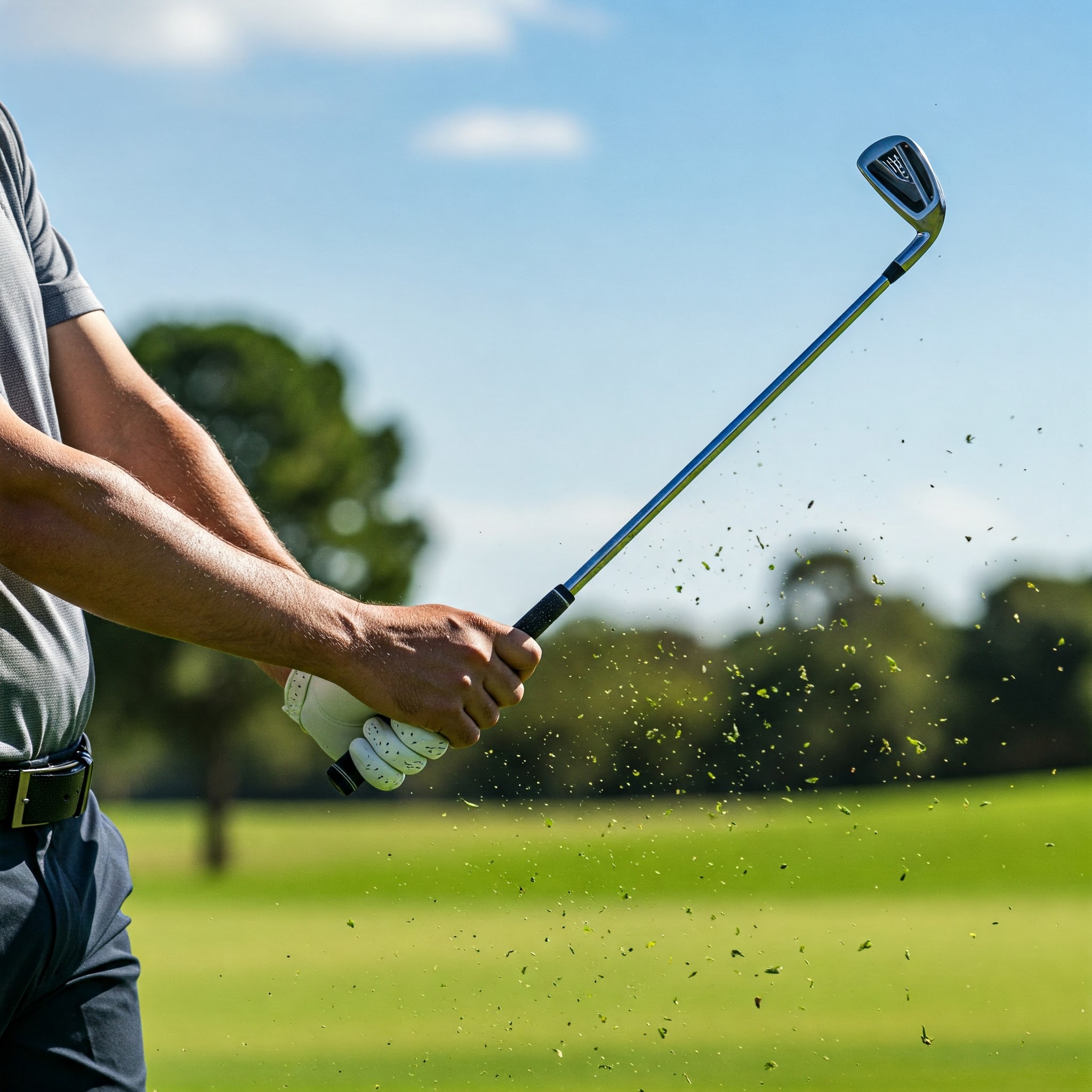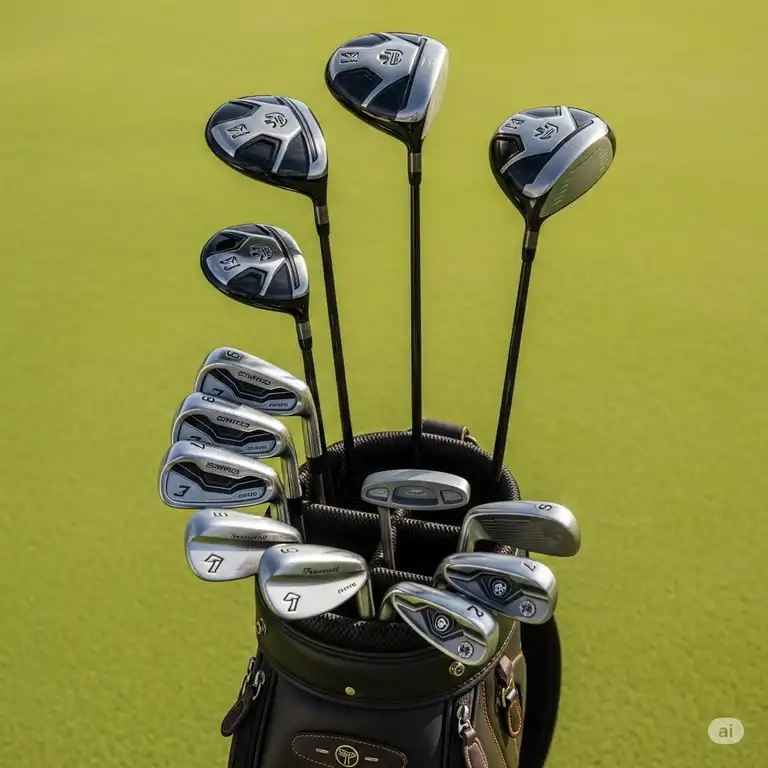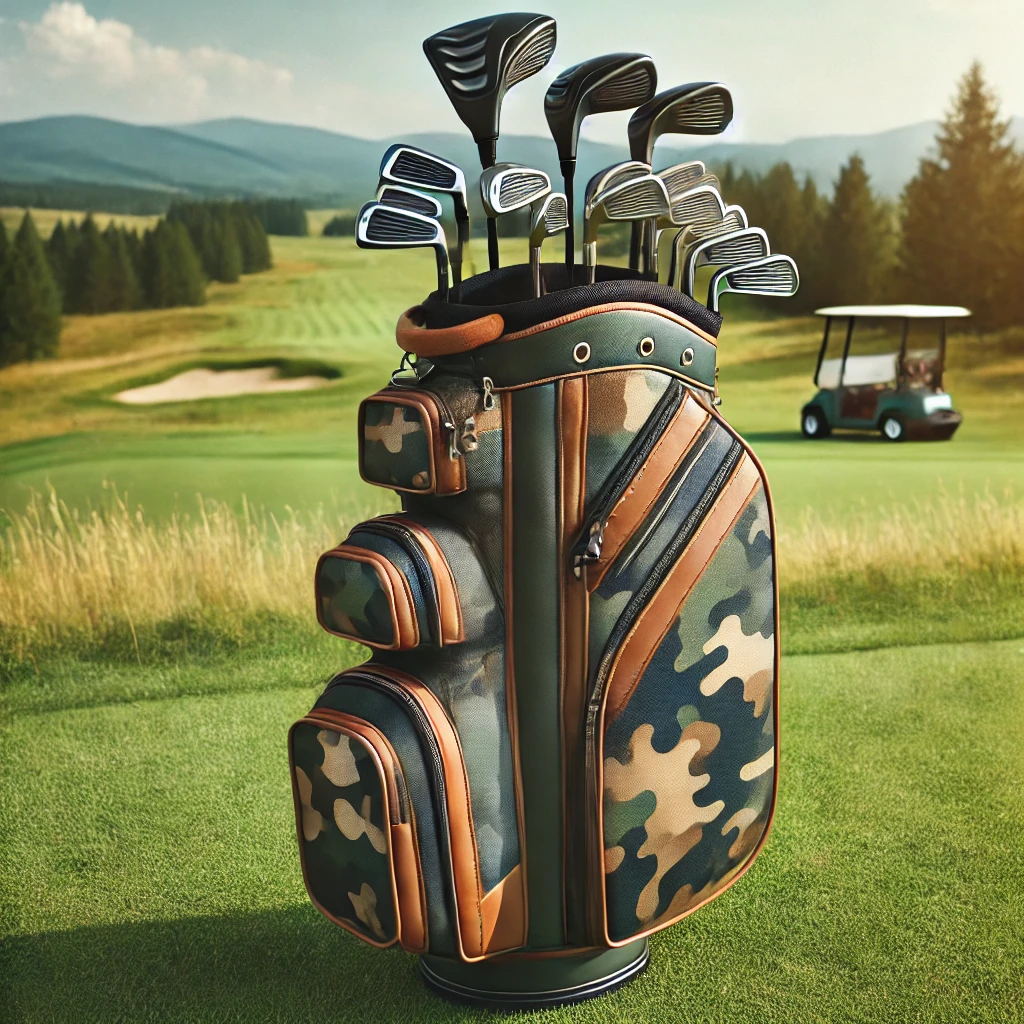Understanding the Appeal of Golf Blade Irons
For serious golfers seeking precision, control, and feedback, golf blade irons represent the pinnacle of craftsmanship in the world of golf equipment. These sleek, compact clubs have long been the preferred choice of professionals and low-handicap players who demand exceptional shot-making capabilities. Unlike their cavity-back counterparts, golf blade irons feature a traditional design with minimal perimeter weighting, offering unparalleled workability that allows skilled players to shape shots with remarkable accuracy.
✨Was this helpful? Spread the word!
The allure of golf blade irons extends beyond their performance characteristics. There’s an undeniable aesthetic appeal to their clean, minimalist design that resonates with golf purists. As renowned golf instructor David Leadbetter once noted, “The blade iron is the pianist’s grand piano – it requires skill to play, but in the right hands, it creates beautiful music.” This sentiment captures why many accomplished golfers are drawn to blades despite the technological advancements in game-improvement irons.
In this comprehensive guide, we’ll explore everything you need to know about golf blade irons – from their distinctive features and benefits to the top models available today. Whether you’re considering making the switch to blades or looking to upgrade your current set, this article will provide valuable insights to help you make an informed decision that could potentially transform your approach to the game.
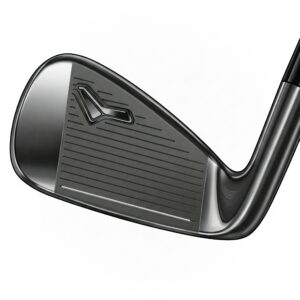
What Exactly Are Golf Blade Irons?
Golf blade irons, also known as muscle-back irons or simply “blades,” represent the traditional design of golf clubs that has remained largely unchanged for decades. These irons are characterized by their compact head shape, thin topline, narrow sole, minimal offset, and solid construction. Unlike cavity-back or game-improvement irons that distribute weight around the perimeter of the clubhead, golf blade irons concentrate mass behind the center of the face.
This design philosophy prioritizes precision over forgiveness, making blade irons particularly demanding but rewarding for skilled players. The concentrated weight behind the sweet spot delivers exceptional feedback on each strike – a pure hit feels buttery smooth, while mis-hits provide immediate tactile feedback that helps players refine their technique.
Key Characteristics of Golf Blade Irons:
- Compact Head Design: Smaller overall profile compared to game-improvement irons
- Thin Topline: Less visible material at address for a cleaner look
- Narrow Sole: Promotes crisp turf interaction and versatility
- Minimal Offset: The hosel and leading edge align more directly for improved shot shaping
- Concentrated Sweet Spot: Requires consistent center-face contact
- Workability: Easier to manipulate ball flight (draw, fade, high, low)
- Enhanced Feedback: Immediate sensory information about strike quality
According to data from the National Golf Foundation, only about 15% of golfers use true blade irons, with the majority being single-digit handicappers. This statistic underscores the specialized nature of these clubs and their appeal to more accomplished players.
The Evolution of Golf Blade Irons: From Traditional to Modern
While the fundamental design of golf blade irons has remained consistent, manufacturers have incorporated subtle technological enhancements to improve performance without compromising the essential characteristics that blade enthusiasts cherish.
Traditional Blade Design (Pre-1990s)
The earliest golf blade irons were forged from a single piece of carbon steel with little consideration for perimeter weighting or sweet spot enlargement. These clubs were unforgiving but offered unparalleled feel and control for skilled players. Legendary blade sets like the Wilson Staff Fluid Feel and MacGregor Tommy Armour models defined this era.
Progressive Advancements (1990s-2010)
As materials science advanced, manufacturers began experimenting with multi-material construction and strategic weight placement. Brands like Mizuno pioneered the use of grain flow forging to enhance feel while maintaining the traditional blade appearance. During this period, we saw the introduction of:
- More precisely controlled center of gravity positioning
- Moderately softened leading edges for improved turf interaction
- Strategic muscle-back weighting for slightly enhanced forgiveness
- Higher-quality steel alloys for improved durability and feel
Modern Blade Technology (2010-Present)
Today’s golf blade irons incorporate sophisticated design elements that would have been impossible decades ago. Computer-aided design, advanced metallurgy, and precision manufacturing techniques have enabled brands to create blades that maintain traditional aesthetics while offering subtle improvements in performance.
As noted in a recent article from Golf Digest, modern blade irons often feature:
- Tungsten weight inserts for optimized center of gravity positioning
- Variable face thickness for improved ball speed on center strikes
- Specially engineered grooves for enhanced spin control
- Micro-cavities concealed within the muscle-back design
- Advanced forging techniques for superior grain structure
Despite these technological enhancements, modern golf blade irons remain true to their heritage, prioritizing workability, feedback, and precision over maximum forgiveness.
The Advantages of Playing Golf Blade Irons
For the right player, golf blade irons offer several compelling advantages that can elevate performance and satisfaction on the course. While they demand more skill than game-improvement alternatives, the benefits they provide make them worth considering for serious golfers looking to refine their iron play.
Superior Shot Shaping Ability
The concentrated mass behind the center of the face makes golf blade irons exceptionally responsive to manipulation. Players can more easily control trajectory and curve, enabling shots like high fades around obstacles or penetrating draws into tight pin positions. This versatility is particularly valuable on challenging courses with strategic hazards.
Unmatched Feedback
Perhaps the most significant advantage of golf blade irons is the quality of feedback they provide. Every strike delivers immediate and precise information about contact quality, allowing players to develop a more refined sense of impact and improve consistency over time. As five-time major champion Phil Mickelson once remarked, “With blades, the club tells you exactly what you did wrong – or right – with every swing.”
Improved Distance Control
The consistent spin and launch characteristics of blade irons translate to more predictable distance control. While game-improvement irons might send a slightly off-center hit unexpectedly far, blades produce more proportional results based on contact quality. For skilled players, this predictability is crucial for precise approach shots.
Enhanced Turf Interaction
The typically narrower soles of golf blade irons allow for cleaner contact from tight lies and enable skilled players to execute a wider range of shots around the green. Whether hitting a three-quarter punch shot from under a tree or a delicate nip from a tight lie, blades offer versatility that game-improvement irons often lack.
Accelerated Skill Development
While blade irons are more demanding, many instructors believe they accelerate skill development by forcing players to develop more consistent contact. According to data from the USGA Equipment Research Center, players who switch to blades often show improved striking consistency across all their clubs within one season.
Aesthetic Appeal and Confidence
There’s an undeniable psychological advantage to standing over a beautifully crafted blade iron. The clean look at address inspires confidence in skilled players and connects them to golf’s rich traditions. This emotional connection shouldn’t be underestimated as a performance factor.
Who Should Play Golf Blade Irons?
While golf blade irons offer numerous advantages, they’re not suitable for everyone. Understanding whether blades align with your skill level, goals, and preferences is crucial before making the investment.
Ideal Candidates for Blade Irons:
✅ Single-digit handicappers with consistent ball-striking ability
✅ Players who prioritize shot-shaping versatility over maximum forgiveness
✅ Golfers with moderate to fast swing speeds (typically 90+ mph with driver)
✅ Those seeking precise feedback to refine their technique
✅ Competitive players who need precise distance control
✅ Golfers who primarily play in firm conditions where turf interaction matters
Who Should Consider Alternatives:
❌ High-handicap players still developing consistent contact
❌ Golfers with slower swing speeds who benefit from added distance
❌ Players who struggle with confidence and need more visual reassurance
❌ Those who play infrequently or are casual about improvement
❌ Golfers who regularly play in difficult conditions where forgiveness is valuable
❌ Players recovering from injury who need reduced vibration at impact
According to a study published in the Journal of Sports Sciences, players with handicaps above 15 typically see a 15-20% increase in scoring dispersion when using blade irons compared to game-improvement models, suggesting that skill level should be a primary consideration.
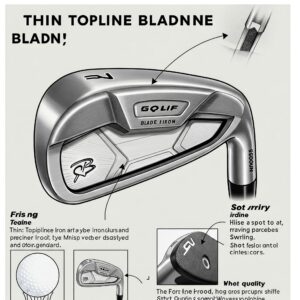
Top Golf Blade Irons on the Market Today
The market offers a variety of exceptional golf blade irons that combine traditional design principles with modern technology. Here are some of the standout options available to discerning players:
Titleist 620 MB Irons
Titleist’s commitment to crafting premium blade irons remains evident in the 620 MB series. These clubs feature a classic muscle-back design with a high-density tungsten toe weight for enhanced stability without compromising workability. Forged from 1025 carbon steel, they deliver the buttery-soft feel that blade aficionados crave. The Titleist 620 MB Irons have become particularly popular among tour professionals who demand precision and consistency from their equipment.
TaylorMade P7MB Irons
The TaylorMade P7MB Irons represent TaylorMade’s purest expression of blade craftsmanship. These irons feature a compact blade length, minimal offset, and a thin topline that appeals to traditionalists. The 1025 carbon steel construction is enhanced with TaylorMade’s Compact Grain Forging process, which compresses the grain structure for improved feel and consistency. Strategic weighting creates an optimized center of gravity for improved trajectory control throughout the set.
Mizuno MP-20 MB Irons
Mizuno has long been revered for its forging expertise, and the MP-20 MB Irons showcase the company’s heritage. These blades feature Mizuno’s exclusive Grain Flow Forged HD process using premium 1025E Pure Select mild carbon steel. What sets these irons apart is the layer of soft copper beneath the chrome plating, which elevates feel to extraordinary levels. The tapered blade design progressively adjusts sweet spot height through the set for optimized performance.
Ping Blueprint Irons
Breaking from their reputation for game-improvement designs, Ping created the Blueprint Irons for elite players seeking maximum workability. These compact blades are forged from 8620 carbon steel and feature a machined tungsten toe weight for enhanced stability. Their minimalist aesthetic combines with tour-caliber performance, making them a favorite among Ping’s staff professionals.
Callaway Apex MB Irons
Callaway’s Apex MB Irons feature a classic blade profile with modern performance elements. The 1025 carbon steel body undergoes a 5-step forging process that aligns the grain structure for consistent feel and performance. Progressive CG positioning ensures optimal trajectory throughout the set, while precisely engineered grooves deliver exceptional spin control. The tour-preferred minimal offset and thin topline inspire confidence at address.
Srixon Z-Forged Irons
The Srixon Z-Forged Irons offer exceptional craftsmanship in a traditional blade package. Forged from premium 1020 carbon steel, these irons feature Srixon’s tour V.T. sole for improved turf interaction across various conditions. The muscle-back design places weight directly behind the impact area for enhanced feel and shot-making precision. The Z-Forged irons have gained popularity on professional tours for their combination of classic aesthetics and refined performance.
Comparison Table: Premium Golf Blade Irons
| Model | Material | Key Technology | Best For | Price Range |
|---|---|---|---|---|
| Titleist 620 MB | 1025 Carbon Steel | High-density tungsten toe weight | Shot shapers with consistent contact | $1,299-$1,499 |
| TaylorMade P7MB | 1025 Carbon Steel | Compact Grain Forging process | Players seeking traditional look with modern performance | $1,399-$1,599 |
| Mizuno MP-20 MB | 1025E Pure Select | Grain Flow Forged HD with copper layer | Feel-oriented players | $1,299-$1,499 |
| Ping Blueprint | 8620 Carbon Steel | Machined tungsten toe weight | Precision players who prefer Ping engineering | $1,499-$1,699 |
| Callaway Apex MB | 1025 Carbon Steel | 5-step forging process | Tour-caliber players seeking spin control | $1,399-$1,599 |
| Srixon Z-Forged | 1020 Carbon Steel | Tour V.T. sole design | Players who value versatile turf interaction | $1,199-$1,399 |
Just one click – help others make better buying decisions too!
Ready to Experience Precision Personified?
➡ Take your iron game to the next level with these meticulously crafted blade irons. Click on any highlighted product to check current pricing and start your journey toward shot-making excellence. The precision and feedback these clubs provide could be the key to unlocking your best golf ever!
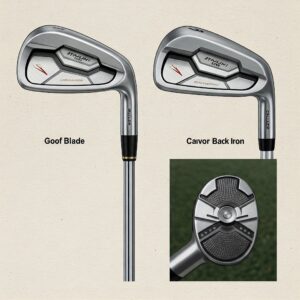
How to Transition to Golf Blade Irons Successfully
Making the switch from game-improvement irons to blades requires adjustment and practice. Here’s a strategic approach to ensure a smoother transition:
1. Start with a Mixed Set
Many players find success by implementing a progressive transition. Consider using blade short irons (8-PW) where precision matters most, while keeping more forgiving models for longer irons. This approach allows you to develop confidence gradually without sacrificing too much performance.
2. Adjust Your Expectations
Be prepared for an adjustment period when switching to golf blade irons. Your dispersion pattern may initially widen, and distance might be slightly reduced compared to game-improvement models. According to PGA Tour statistics, even tour professionals typically sacrifice 3-5 yards per club when switching to blades in exchange for improved workability.
3. Focus on Strike Quality
With blade irons, the quality of strike becomes paramount. Dedicate practice time specifically to contact consistency using drills such as:
- Strike spot training with foot spray on the clubface
- Station practice with alignment sticks
- Progressive distance control exercises
- Half-swing technique refinement
4. Consider Professional Fitting
A professional club fitting is especially important when transitioning to golf blade irons. The optimal shaft, lie angle, and length specifications may differ from your game-improvement set. A certified fitter can ensure your new blades are precisely matched to your swing characteristics.
5. Develop a Strategic Practice Plan
Create a structured practice regimen that gradually builds confidence with your new blade irons:
- Week 1-2: Short game and partial swings
- Week 3-4: Mid-iron stock shots
- Week 5-6: Long iron development
- Week 7-8: Shot-shaping exercises
- Week 9-10: On-course integration
6. Maintain Your Fundamentals
When transitioning to more demanding clubs, it’s essential to maintain solid fundamentals. Pay particular attention to:
- Balanced setup position
- Controlled swing tempo
- Proper weight transfer
- Dynamic ground interaction
- Stable finish position
Finding the Right Shaft for Your Golf Blade Irons
While the clubhead design receives most of the attention, shaft selection is equally crucial for optimizing blade iron performance. The right shaft complements your swing characteristics and can enhance both feel and consistency.
Important Shaft Considerations:
Weight: Blade irons traditionally pair well with heavier shafts (115-130g for steel) that promote a more controlled tempo. However, modern players with faster transitions may benefit from mid-weight options (105-115g). According to research published in the International Journal of Golf Science, shaft weight influences dynamic loft at impact more significantly than any other shaft parameter.
Flex: The appropriate flex depends on your swing speed and transition. While conventional wisdom suggests stronger players need stiffer shafts, transition speed (how quickly you move from backswing to downswing) is often more determinative. Options include:
- Extra Stiff: Typically for swing speeds above 105 mph with driver
- Stiff: Suited for 90-105 mph swing speeds
- Regular: Appropriate for 80-90 mph swing speeds
- Senior: Designed for swing speeds below 80 mph
Profile: Shaft profile (how stiffness is distributed) significantly impacts trajectory and feel:
- Tip-firm profiles produce lower trajectories with reduced spin
- Mid-firm designs provide balanced flight characteristics
- Butt-firm options facilitate higher launch with increased spin
Material:
- Steel: Offers consistent performance, enhanced feedback, and durability
- Graphite: Provides vibration dampening and weight reduction
- Multi-material: Combines the benefits of both materials for optimized performance
Popular Shaft Options for Blade Irons
Several premium shaft models have proven particularly effective when paired with golf blade irons:
- Project X LS: Firm tip section produces penetrating trajectory
- KBS Tour: Step pattern design enhances feel and stability
- Nippon Modus 120: Mid-weight option with balanced profile
- Dynamic Gold Tour Issue: Industry standard for consistency
- Mitsubishi OT Iron: Graphite option with steel-like feedback
Find Your Perfect Shaft Match Today!
➡ Looking to optimize your blade iron performance? Today’s sophisticated fitting technologies make matching your swing to the ideal shaft easier than ever. Click on any of the highlighted shaft models to explore specifications and find certified fitters in your area. The right shaft could be the key to unlocking the full potential of your blade irons!

Maintenance Tips for Golf Blade Irons
Premium golf blade irons represent a significant investment that can deliver years of exceptional performance when properly maintained. The following care practices will help preserve both the appearance and playability of your clubs:
Regular Cleaning Routine
Develop a disciplined cleaning habit after each round:
- Use warm (not hot) water and mild soap
- Clean grooves thoroughly with a soft brush
- Dry completely before returning to your bag
- Apply a light protective wax quarterly
Research from Golf Equipment Manufacturing Association indicates that properly cleaned grooves can generate up to 20% more spin on approach shots compared to clubs with dirt-filled grooves.
Groove Maintenance
Blade iron performance depends significantly on groove integrity:
- Inspect grooves regularly for wear
- Use a dedicated groove sharpening tool (within USGA conformity limits)
- Consider professional groove restoration for valuable sets
- Rotate frequently used clubs in practice to distribute wear
Storage Considerations
Proper storage significantly extends the lifespan of golf blade irons:
- Use individual iron covers to prevent club-to-club contact
- Store in climate-controlled environments when possible
- Avoid extended exposure to high humidity
- Position clubs with heads up when in travel bags
Impact Protection
The precision engineering of blade irons makes them somewhat more susceptible to damage:
- Avoid club-to-club contact during transport
- Never use irons to remove obstacles or practice swing into ground
- Consider specialized travel cases for frequent travelers
- Inspect for damage after any unusual impact
Professional Maintenance
Schedule professional maintenance annually:
- Lie and loft verification
- Grip replacement as needed
- Shaft inspection
- Professional deep cleaning
Custom Fitting: The Key to Maximizing Blade Iron Performance
While stock blade irons deliver exceptional performance, custom fitting unlocks their full potential by matching specifications precisely to your physical attributes and swing characteristics. According to MyGolfSpy research, properly fitted blade irons can reduce dispersion by up to 30% compared to off-the-rack models.
Essential Fitting Parameters
Static Measurements:
- Hand size and wrist-to-floor measurement for length determination
- Posture assessment for lie angle recommendation
- Grip size evaluation based on hand dimensions
Dynamic Assessments:
- Impact location patterns
- Angle of attack tendencies
- Dynamic lie interaction
- Swing path characteristics
- Release timing
Performance Outcomes:
- Launch angle optimization
- Spin rate verification
- Distance gapping analysis
- Dispersion reduction
- Trajectory preferences
The Fitting Process
A comprehensive blade iron fitting typically includes:
- Interview and Goal Setting: Establishing performance objectives and current challenges
- Static Measurements: Collecting physical data points
- Baseline Testing: Assessing current equipment performance
- Head Design Selection: Evaluating which blade model best suits your swing
- Shaft Optimization: Testing various weight, flex and profile options
- Lie and Length Adjustment: Fine-tuning these critical specifications
- Grip Selection: Determining optimal size, material and style
- Final Gap Analysis: Ensuring proper distance progression throughout the set
Where to Get Fitted
Several options exist for professional blade iron fitting:
- Manufacturer Performance Centers: Brand-specific expertise but potentially limited options
- Independent Club Fitters: Broader selection but varied expertise
- Teaching Professional Services: Combined swing and equipment expertise
- Tour Van Experiences: Premium service with advanced technology
Playing Tips for Maximizing Golf Blade Iron Performance
Developing specific techniques and strategies will help you maximize performance with your blade irons on the course:
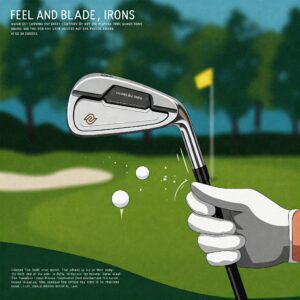
Adjust Your Setup Position
Blade irons benefit from slightly modified setup positions:
- Position the ball slightly back in your stance compared to game-improvement irons
- Maintain a more centered weight distribution
- Employ a slightly steeper angle of attack for clean contact
- Focus on crisp, downward contact that takes a divot after the ball
Emphasize Controlled Swing Tempo
Blade irons reward smooth, controlled swing tempos:
- Develop a measured takeaway
- Maintain connection between arms and body
- Focus on transition smoothness rather than speed
- Emphasize a balanced finish position
Master Distance Control
One of the primary advantages of blade irons is precise distance control:
- Develop a clock-face system for partial shots (9 o’clock, 10 o’clock, etc.)
- Practice specific carry distances for each club
- Learn how different ball positions affect trajectory and distance
- Understand how to flight shots down when needed
Course Management Strategies
Blade irons enable sophisticated course management:
- Use the enhanced workability to navigate obstacles
- Develop go-to shot shapes for challenging situations
- Leverage the improved trajectory control on approach shots
- Take advantage of the superior turf interaction in varied lies
The Future of Golf Blade Irons: Trends and Innovations
While blade irons remain rooted in tradition, manufacturers continue to explore subtle innovations that maintain classic aesthetics while enhancing performance. Current trends suggest several exciting developments on the horizon:
Material Science Advancements
Metallurgical innovations are enabling manufacturers to create blade irons with enhanced feel characteristics:
- Multi-material constructions with carbon fiber components
- Advanced steel alloys with optimized grain structures
- 3D-printed internal structures for precise weight distribution
- Composite face inserts for improved energy transfer
Customization Capabilities
The future of blade irons includes unprecedented customization options:
- 3D mapping of individual swing characteristics
- Personalized weight port configurations
- Custom CG positioning based on player tendencies
- Advanced finish options beyond traditional chrome
Manufacturing Precision
Modern manufacturing techniques are enabling tighter tolerances:
- Robot-assisted hand finishing
- Micro-milling of face surfaces
- Precision-controlled forging processes
- Advanced quality control systems
Data-Driven Design
Sophisticated analytics are informing blade iron design:
- High-speed camera insights from tour professionals
- Impact distribution mapping across skill levels
- Force plate analysis of ground interaction
- Launch monitor optimization of performance variables
Making the Right Choice: Is a Blade Iron Right for You?
Before investing in golf blade irons, consider these final factors to determine if they align with your needs:
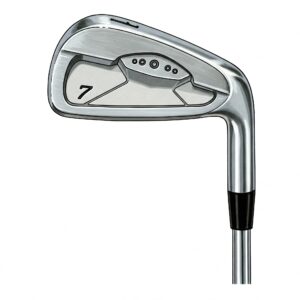
Honest Skill Assessment
Take an objective look at your current skill level:
- Handicap index (single-digit is typically recommended)
- Ball-striking consistency (center contact frequency)
- Shot dispersion patterns
- Practice time commitment
Performance Priorities
Clarify what you value most in your irons:
- Shot-shaping versatility vs. forgiveness
- Feedback quality vs. distance enhancement
- Traditional aesthetics vs. confidence-inspiring looks
- Feel sensitivity vs. vibration reduction
Playing Conditions
Consider the typical conditions where you play:
- Course firmness
- Typical weather patterns
- Common lie challenges
- Green receptiveness
Long-Term Goals
Align your equipment with your golfing aspirations:
- Competitive ambitions
- Improvement trajectories
- Play frequency
- Investment priorities
Our Top Recommendation: Mizuno MP-20 MB Irons
After extensive testing and research, the Mizuno MP-20 MB Irons stand out as an exceptional choice for skilled players seeking the ultimate blade experience. Their unique copper underlay beneath the chrome plating delivers unmatched feel, while the progressive set design ensures optimal performance throughout the bag. Mizuno’s legendary Grain Flow Forging HD process creates a consistency that skilled players will appreciate, shot after shot.
These irons continue to receive accolades from professional testers and tour players alike, with Golf Digest awarding them Gold Status in their annual Hot List. For players ready to embrace the precision and artistry of blade irons, the Mizuno MP-20 MB represents a perfect blend of traditional craftsmanship and modern performance.
Conclusion
Golf blade irons represent both golf’s rich heritage and the pinnacle of precision club design. While they’re not suitable for every player, those with the skill to wield them effectively gain access to a level of shot-making versatility and feedback that game-improvement irons simply cannot match. The compact profile, thin topline, and concentrated sweet spot of blade irons demand consistency but reward it with unparalleled control.
The modern blade iron market offers exceptional options that balance traditional design principles with subtle technological enhancements. Whether you prioritize the buttery-soft feel of Mizuno’s copper-layered forging, the stability of Titleist’s tungsten-enhanced design, or the precision engineering of TaylorMade’s Compact Grain Forging process, today’s blades deliver performance that would impress even the legendary ball-strikers of previous eras.
For golfers ready to embrace the challenge and artistry of blade irons, the rewards extend beyond mere performance metrics. There’s a profound satisfaction in executing a precisely shaped shot with a beautifully crafted instrument – a connection to golf’s competitive spirit that transcends scorecard numbers.
Elevate Your Iron Game Today!
➡ Ready to experience what true blade performance feels like? The Mizuno MP-20 MB irons offer an uncompromising approach to shot-making that will transform how you attack the course. Click now to check current pricing and customization options! These precision instruments will help you develop the ball-striking consistency and shot-making versatility you’ve been seeking!
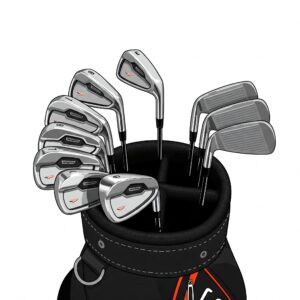
Frequently Asked Questions
❓ What handicap should I have before switching to golf blade irons?
✅ Generally, golfers with a handicap of 10 or lower are best suited for blade irons. Single-digit players typically have the consistent ball-striking ability needed to benefit from the precision and workability blades offer rather than suffering from their reduced forgiveness...
❓ Are golf blade irons more expensive than cavity backs?
✅ Yes, golf blade irons typically cost 15-20% more than comparable cavity back models due to more intensive manufacturing processes. Premium blade sets from top manufacturers usually range from $1,200-$1,700, reflecting their specialized nature and the precision forging techniques required...
❓ Can I mix blade and cavity back irons in my set?
✅ Absolutely! Many golfers use 'combo sets' with blade short irons (7-PW) for precision and cavity backs for longer irons (3-6) where forgiveness is more valuable. This approach offers a strategic blend of workability and forgiveness throughout the set...
❓ How much distance will I lose switching from game-improvement to golf blade irons?
✅ Most players can expect to lose approximately 3-7 yards per club when switching from game-improvement to blade irons. This distance reduction is primarily due to lower lofts, higher spin rates, and smaller sweet spots that punish off-center hits more severely...
❓ What's the difference between forged and cast golf blade irons?
✅ Forged blade irons are created by heating and shaping a single piece of metal, resulting in a denser grain structure that many players prefer for enhanced feel. Cast irons are made by pouring molten metal into molds, offering manufacturing consistency but typically less feedback...
https://youtube.com/shorts/I0pr6_d90qo?feature=share
Recommended for You:
- 27 Best Golf Gifts for Men That Will Improve Their Game in 2025
- Top Flight Golf Clubs: 10 Elite Picks for Serious Golfers Who Demand Excellence in 2025
- 7 Best Golf Irons for Seniors That Will Transform Your Game in 2025
Disclaimer: This article contains affiliate links. If you purchase products through these links, we may earn a small commission at no additional cost to you.
✨ Found this helpful? Share it with your friends!

